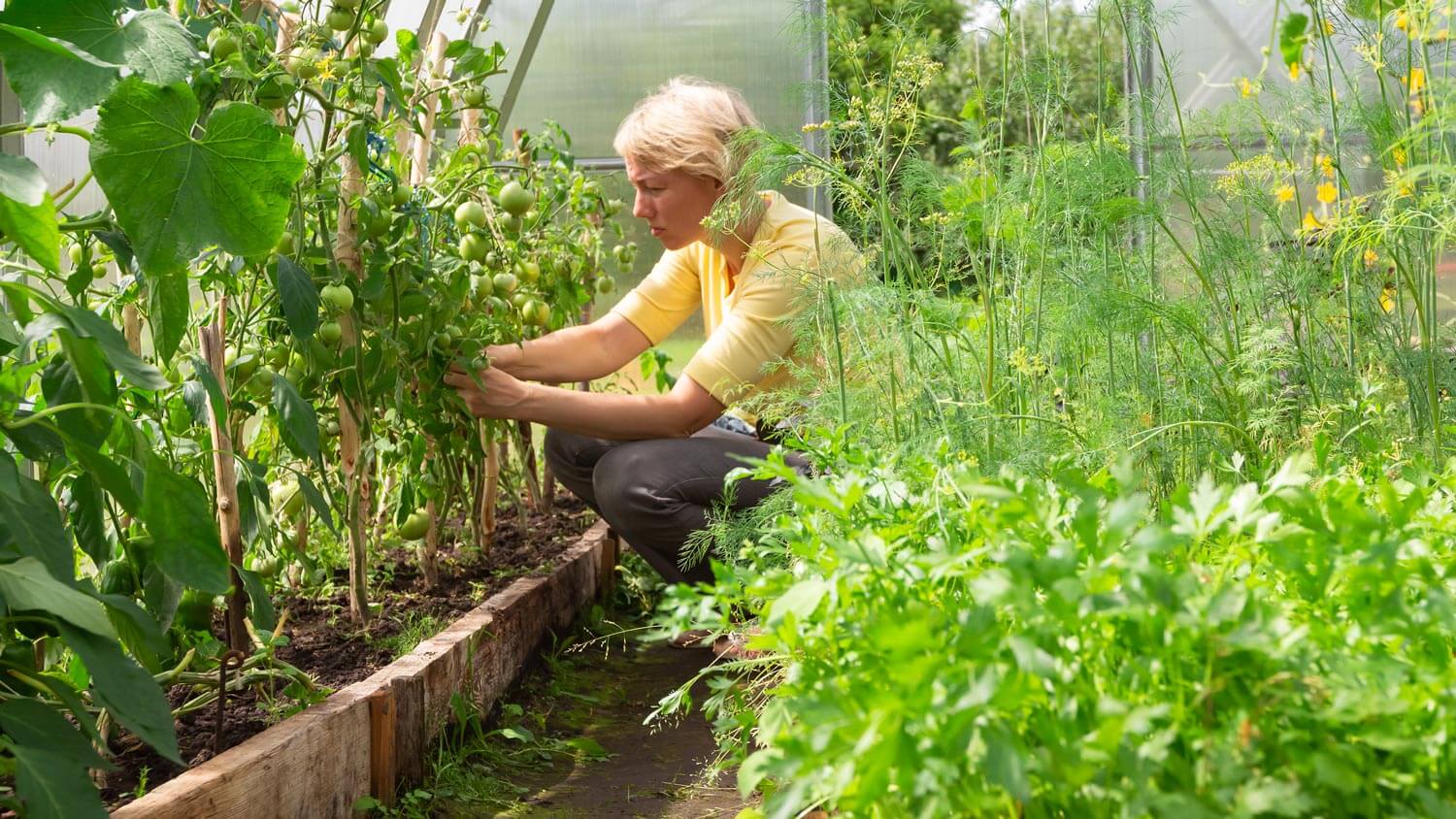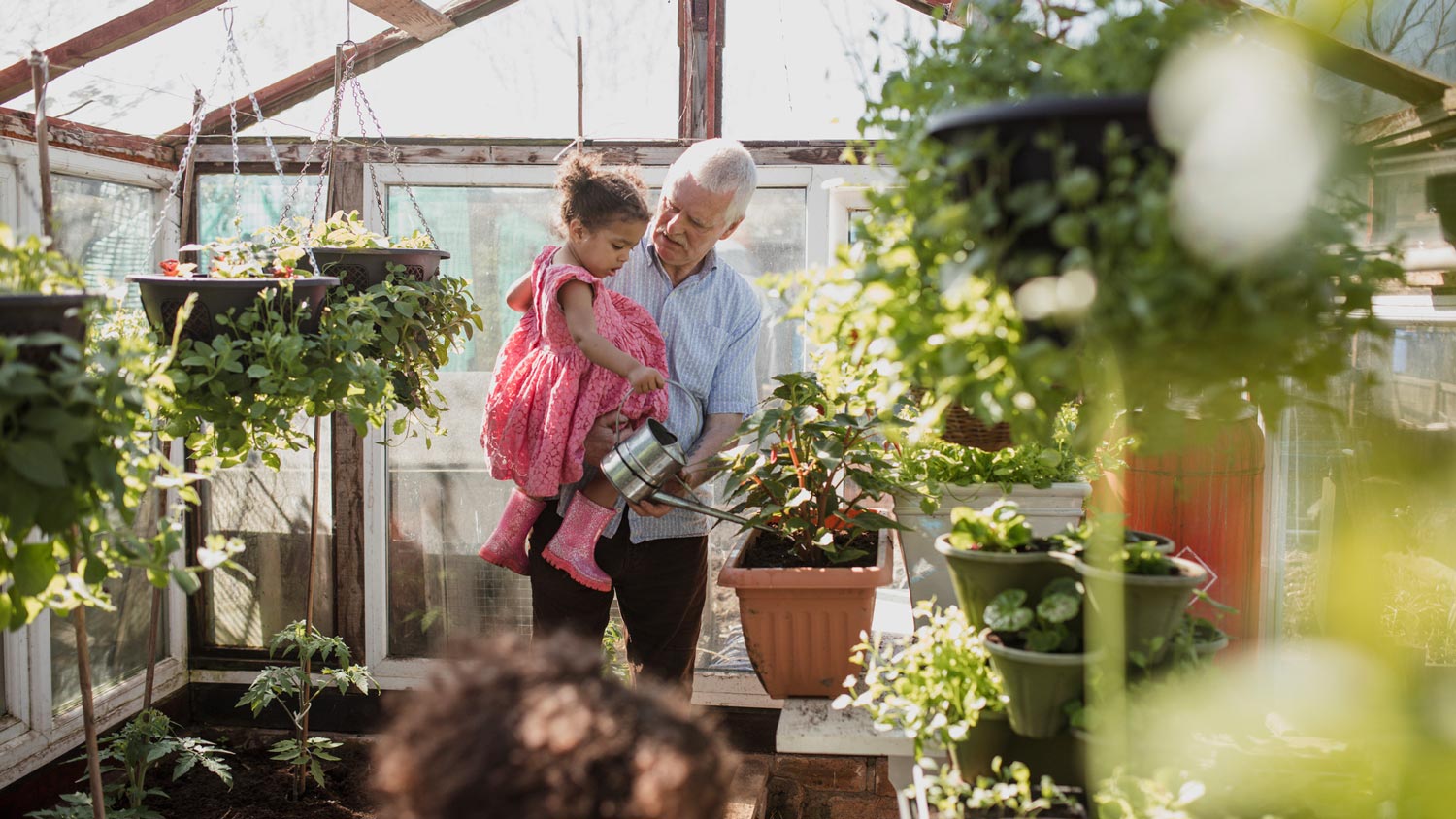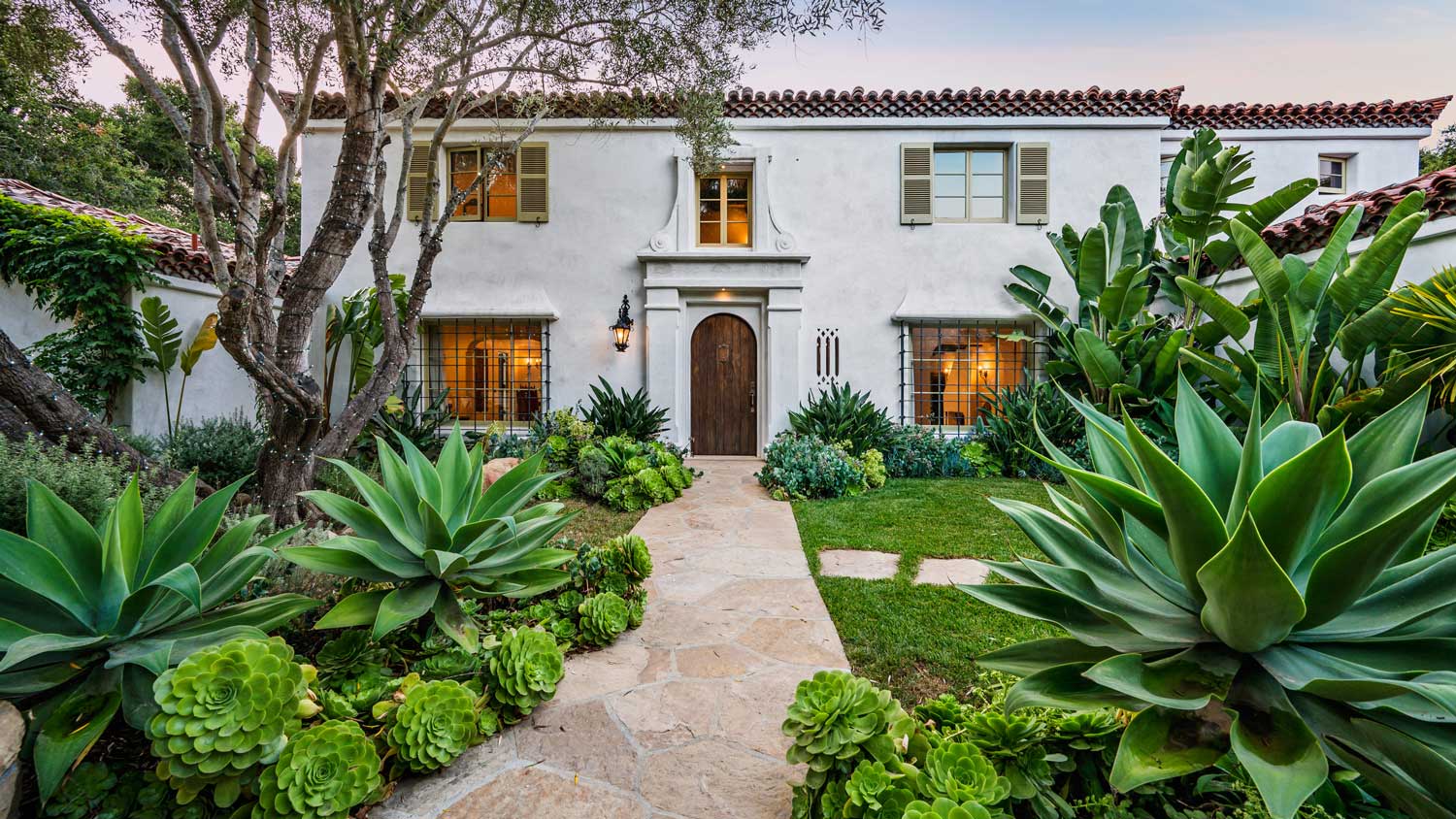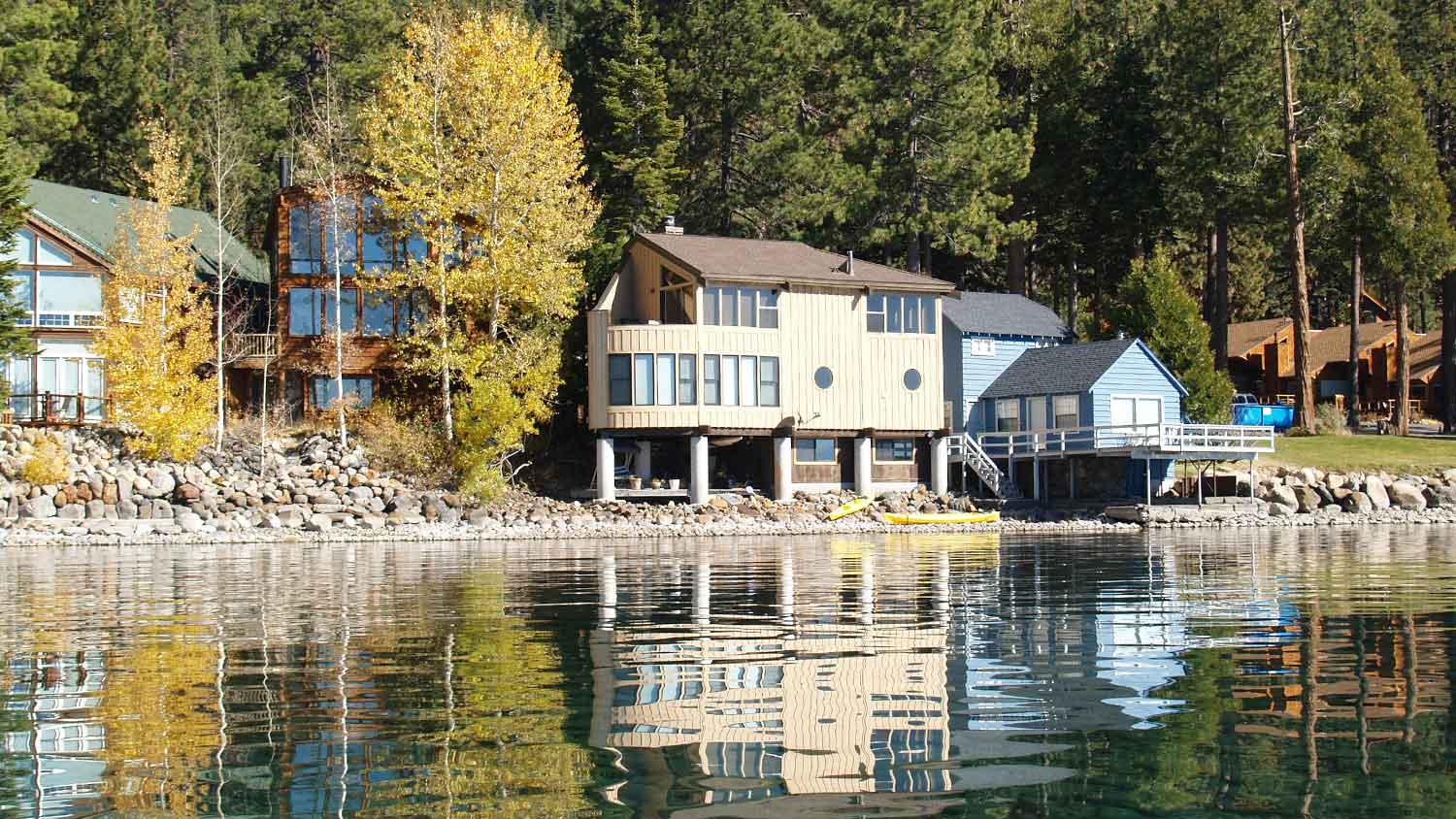
A landscape designer can elevate your outdoor space and bring your vision to life. Use this landscape design cost guide to budget for your next project.
Why buy what you could grow?


Greenhouses don’t always have to include heat lamps, but you face more limitations in what you can grow without them.
Some greenhouses simply protect plants during the cold season or start seedings.
If you can keep your greenhouse at 62 degrees F or higher, it’s possible to grow warm-weather plants like tomatoes year-round.
Whether you’re simply itching for a new hobby or want to be able to grow and eat your own food, learning how to plant vegetables in a greenhouse can be a therapeutic, fun activity that offers a sense of pride and a strong connection to the food on your dinner plate. There are a few things to learn and know before you drop those seeds in the soil, so read on to learn everything you need to know about growing healthy plants in your backyard greenhouse.
The greenhouse plants that thrive depends on what kind of greenhouse you have and the average temperature inside of it.
A cold frame greenhouse uses solar energy and insulation to create a microclimate for your plants. These greenhouses create an optimal environment for cool-season plants that can withstand low overnight temperatures, maintaining temperatures five to 10 degrees F warmer than whatever it is outside the greenhouse. The home gardener can purchase or build them small enough to place on top of a bed of seedlings to help them sprout.
A starter greenhouse is usually slightly larger than a cold frame, but is also often used to propagate seeds and starter plants before they get moved outside. It might also serve as a potting shed. Starter greenhouses have clear coverings to maximize sunlight for seeds.
These larger greenhouses use diffuse or semi-diffuse coverings, and are meant to create a shelter for crops year-round, but are multi-purpose, functioning as a place to handle all sorts of garden tasks like seed propagation, potting, curing harvested crops, and more.
Temperatures also differentiate greenhouses, and this is important to know when choosing which plants to grow in yours.
Hot House: Stable temperature of 65 to 70 degrees Fahrenheit or higher; heaters and grow lights are necessary.
Warm: Stable temperature between 50 and 55 degrees Fahrenheit. Some grow lights and heat lights might be necessary during winter.
Cool: Also called a frost-free greenhouse, the temperature ranges between 40 and 45 degrees. No grow lights or heat lights are necessary.

Many plants will thrive in the temperature-controlled environment of a greenhouse. Still, you should decide if you plan to invest in the grow or heat lights necessary to maintain a summer-like atmosphere in your greenhouse year-round, or if you want a simpler setup that follows seasonal planting schedules, as described below.
Winter is the time to grow and eat hearty vegetables, such as broccoli, cabbage, cauliflower, kale, and Brussels sprouts. Onions, garlic, and leeks will also thrive alongside salad greens and root vegetables like parsnips, potatoes, and beets in the colder months. These vegetables do not mind a little chill (kale can withstand temperatures as low as zero degrees!), and can handle a cool greenhouse environment, unless you live in an exceptionally cold place (we’re talking double-digits). You can also use this time to seed warm-loving plants, such as tomatoes, peppers, and eggplants.
This is the time to seed warm-loving plants with a shorter window to maturity, like beans, basil, and cucumbers. You can move The plants you were growing in winter (broccoli, cauliflower, onions) outside once temperatures are consistently 45 degrees F or higher.
Grow and enjoy plants that love the heat, such as cucumbers, tomatoes, berries, and peppers. The ideal temperature for these plants is between 55 and 85 degrees.
Once late summer hits in August and September, it’s time to plant your winter harvest, so these plants reach maturity by November or December. Before the first frost hits, move some potted plants inside your greenhouse for the winter—citrus, peppers, and tomatoes can continue to grow (albeit slowly) in a greenhouse over winter, provided you have the heat lamps to give them the minimum temperature they need.
With ample supplemental lighting, many of the crops listed above can grow year-round, and your crops won’t slow their growth over the cold winter months. Heat lamps can keep a hot greenhouse at 62 degrees or higher, allowing for warm-weather crops like tomatoes to continue thriving.

Here are the other greenhouse ideas and details to consider, in addition to temperature.
When your plants are inside a greenhouse, they won’t have access to natural pollinators, like bees. Read about your crops and the kind of pollination they need; you may need to use fans to mimic natural pollination or transfer pollen with cotton buds.
With or without grow lamps, it’s important to consider the placement of plants relative to where your greenhouse plants get the most sun. Before putting down containers, mark the spots in the greenhouse where the sun hits first and place your sun-loving crops (basil, tomatoes, peppers) there. Radishes, beets, and carrots do well in light shade, and scallions, kale, and spinach are comfortable in partial shade.
As you add more grow lamps and your greenhouse gets increasingly elaborate, the higher your energy bills will be. You need to decide if the amount of fresh, homegrown food you grow will offset the costs.
From average costs to expert advice, get all the answers you need to get your job done.

A landscape designer can elevate your outdoor space and bring your vision to life. Use this landscape design cost guide to budget for your next project.

Discover how much hedges cost to plant, whether hiring a professional for the job or doing it yourself to frame your yard in beauty. Read on to learn more.

Landscape curbing can really improve the look of a yard, but at what cost? Find out how much it costs and the different ways you can do it

What is the name of someone who designs landscaping? A landscape architect creates stunning, functional outdoor spaces with expert design skills.

Want a new look for your yard that’s low maintenance? Check out some rock landscaping ideas to give your backyard an update.

Riprap prevents erosion and protects your shoreline when done right. Learn who to hire for riprap and how to find a licensed professional.